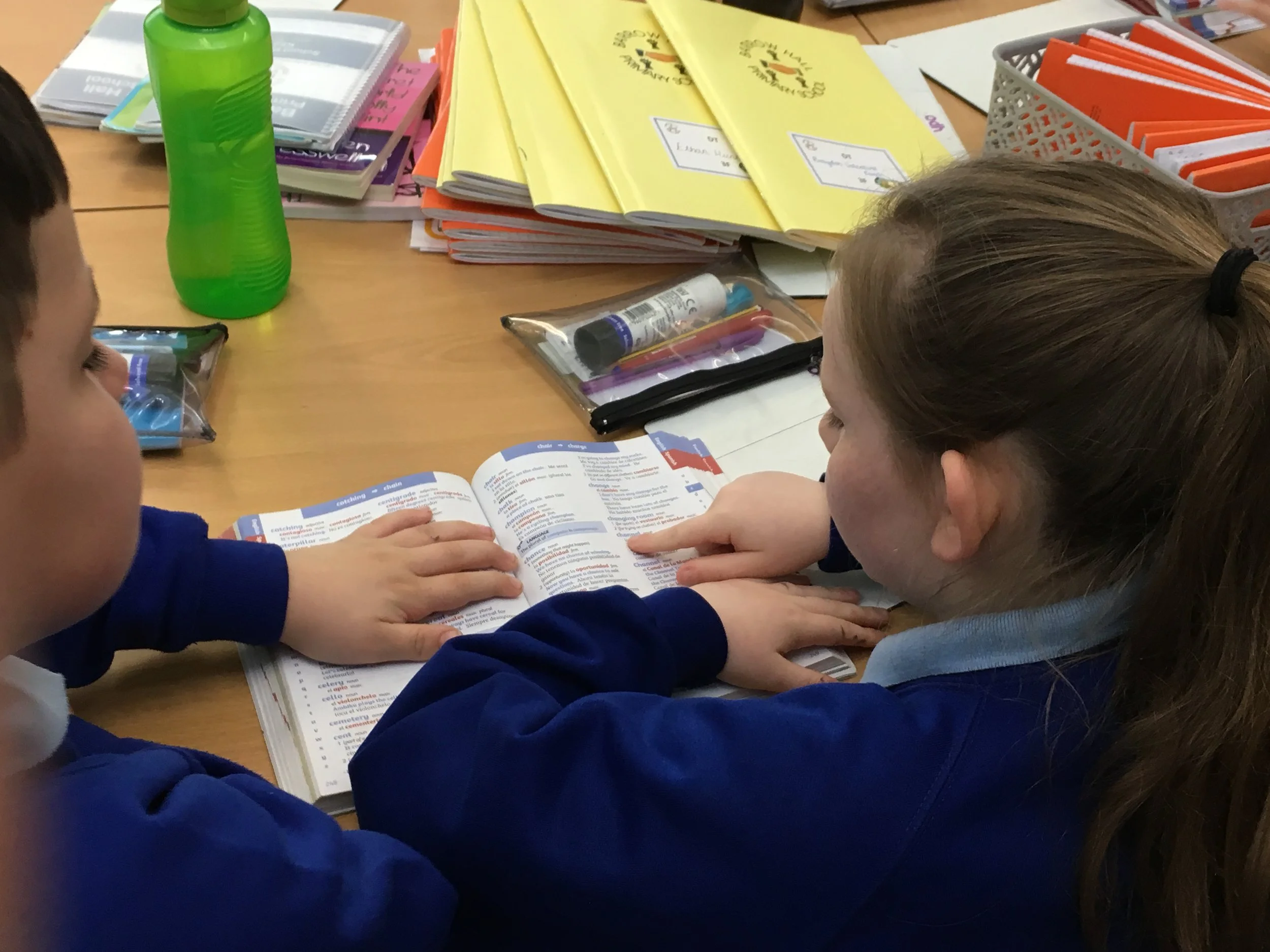Hello,
This morning I went to observe Robert Artingstall teach Spanish to a Year 3 class at Barrowhall Primary School – the Easter holidays are just around the corner and after finishing off this term’s topics including World Book Day and the Gruffalo in Spanish today was the perfect opportunity for a revision lesson.
As I arrived Robert was doing the morning register in Spanish: ¿Comida caliente? ¿Tostada? ¿Uno, dos? Some children answering in Spanish others in English. Then Robert started chatting across the room to Gonzalo, a native speaker from the class – there was no mistake, we were here to learn Spanish!
The lesson started with a greeting song and then another ‘action’ song that got the children moving and singing in Spanish.
Robert then explained that the children were going to do some revision work today.
They started with the ‘hide and reveal’ powerpoint from the Ready-made SOW (Year 3 > Spring 2) – the instruction is to try guess the phrase or the question as it slowly appears on the screen and before it’s completely revealed. Children were asked to quietly tell their partner what they thought the phrase or the question was. They did really well and it allowed Robert to do some consolidation work on pronunciation and mention question word ‘Cómo’ in Spanish and the fact it’s used in 2 different familiar questions (Cómo te llamas? Cómo estas?). The last slide on the powerpoint is then used as a support slide for children to make up their own conversation.
Hide and Reveal 'Personal Information' powerpoint
¿Cómo..... te llamas or ... estas ? Place your bets!
Then they moved on to colours. First Robert asked the children to recap as many colours they could think of and write them on their whiteboard, they checked their answers and Robert took the opportunity to do some phonic work particularly about the sounds ‘j’, ‘ll’, z’ which are very different to English. They practiced the colours with actions and then played ‘Simon dice’.
Lovely writing from memory.
Robert going over sound/spelling link and key sounds in Spanish.
Finally Robert used the ‘Rainbow writing sheet’ where children have to think of and draw an object that corresponds to each part/colour of the rainbow (for example a strawberry for red, a banana for yellow, etc.).
This task allows for bilingual dictionary work as children have to label the thing they are drawing. Before leaving the children to work independently or in pairs Robert checked that the children were confident using the dictionary and did a whole class example also reinforcing gender (fem/masc) recognition and understanding.
First, find the line in the middle of the dictionary, on one side it's Spanish to English, past the line it's English to Spanish - know which side you need to use.
a cherry is 'cereza' and it's feminine because it says 'fem' and 'la'.
** All the resources mentioned are either from Youtube or from the Primary Languages Network VLE.































